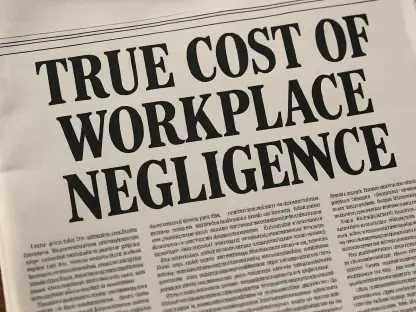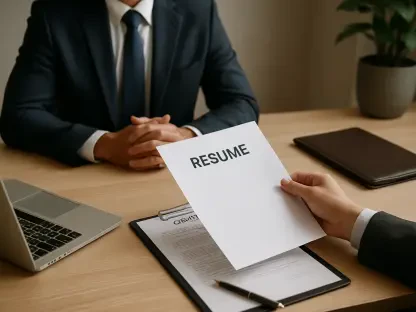In an era marked by economic volatility spurred by tariffs and shifting trade policies, Sofia Khaira, a specialist in diversity, equity, and inclusion, offers her expertise on how HR can play a crucial role in building resilience within organizations. Khaira’s insights focus on navigating these challenges, emphasizing strategic workforce planning, continuous learning, and fostering an organizational culture that thrives amid change.
Can you explain the impact of tariffs imposed during Trump’s second term on the global economy?
The tariffs essentially sparked a wave of uncertainty across global markets, triggering a trade war and causing disruptions in international supply chains. This created a ripple effect, influencing everything from investment decisions to employment rates worldwide. The longer-term impacts included increased costs for industries dependent on imported goods and a shift towards seeking alternate markets and partners.
What specific challenges did UK businesses face due to these tariffs?
UK businesses had to grapple with increased costs, particularly in the automotive and manufacturing sectors, which faced substantial import taxes. This led to reduced competitiveness and pushed companies to reconsider their supply chain strategies. The ripple effects included hiring freezes and cautious investment strategies, all compounded by the pressure of maintaining their workforce amidst economic unpredictability.
How can HR professionals build a resilient workforce culture during economic uncertainty?
HR can foster resilience by promoting a culture of adaptability and continuous learning. Encouraging employees to embrace change and equipping them with the skills needed to navigate shifting market dynamics are crucial steps. By aligning workforce strategies with broader business objectives, HR can ensure that employees not only withstand disruption but also emerge stronger.
What steps can HR take to align talent strategies with rapidly shifting market conditions?
To align talent strategies effectively, HR needs to focus on agile recruitment and development practices. This involves understanding the current skills within the workforce, identifying emerging needs, and creating a talent pipeline that is both flexible and forward-thinking. Innovation and technology should be integrated to streamline processes and address skills gaps promptly.
Clare Burns mentioned the importance of promoting agility and continuous learning. How can HR teams implement this in their organizations?
HR teams can champion continuous learning by providing access to training resources and encouraging cross-functional projects that help employees gain diverse experiences. Creating a flexible environment that supports experimenting with new ideas and approaches is essential. Leadership ought to model and reward such behavior to cultivate an organization-wide culture of agility.
How does remaining alert to industry trends and legislative developments contribute to business resilience, according to Suki Kaur?
According to Kaur, staying informed allows HR to anticipate changes and prepare preemptively, ensuring the company remains compliant and competitive. Understanding legislative shifts can help in adjusting employment practices and policies proactively, which is vital for maintaining stability and morale during periods of upheaval.
What role does open communication play in maintaining organizational stability during economic challenges?
Open communication is fundamental in fostering trust and transparency. It assures employees that the organization is responsive and considerate of their concerns. This approach not only mitigates uncertainty but also encourages feedback and collaboration, which are crucial during challenging times.
The article mentions the potential risk to 25,000 UK jobs due to car import tariffs. How should HR address such threats proactively?
HR should focus on strategic workforce planning to assess which areas are most vulnerable and develop contingency plans. This might involve reskilling initiatives, redeploying talent, or creating cross-training opportunities to pivot employee roles as needed, thus minimizing the impact of potential job losses.
How does strategic workforce planning contribute to an adaptable organizational structure?
Strategic workforce planning lays the groundwork for a structure that can flexibly align with shifting demands. By continuously evaluating workforce capabilities and the external environment, organizations can make informed decisions about recruitment, development, and resource allocation, ensuring they remain nimble and responsive to change.
Krisztina Nemeth emphasizes the importance of identifying skill gaps early. What strategies can HR employ to address these gaps?
HR can leverage data analytics to identify skill gaps promptly and implement targeted training programs. Partnerships with educational institutions or third-party providers can enhance reskilling efforts. Additionally, fostering a culture that values self-directed learning and professional growth is crucial in closing these gaps effectively.
How can targeted support programs help mitigate fears over job cuts and reduced business investment?
Support programs that focus on employee wellbeing, career development, and mental health can significantly alleviate anxieties associated with economic downturns. Offering career coaching, financial planning resources, and flexible working conditions can help reassure employees and maintain morale, thus reducing the potential negative impact of market uncertainties.
What are some upskilling initiatives that HR leaders might promote to enhance employee career prospects?
HR leaders can create development pathways that align with organizational needs, focusing on high-demand skills such as digital literacy and leadership. Encouraging mentorship programs and rotational roles can provide diverse experiences. Online learning platforms and workshops should be leveraged to offer employees accessible opportunities for advancement.
Why is cultivating a culture of innovation important during times of economic shifts?
An innovative culture encourages employees to think creatively about challenges and explore new solutions. It drives the company to adapt and transform its offerings, thus opening new avenues for growth. Such a culture reduces the fear of failure and inspires a proactive mindset, which is essential for navigating economic shifts successfully.
What does “making sure teams are agile” mean in the context of ensuring organizational resilience?
Agility means that teams can adapt quickly to changes without losing momentum. It involves having flexible processes and an openness to reallocate resources across projects or departments as necessary. This approach ensures that the organization can respond effectively to external threats and seize opportunities that arise.
How can HR professionals support employees during times of economic stress or change, as suggested by Karl Bennett?
HR professionals can support employees by providing consistent communication, ensuring access to support services, and maintaining a visible presence within the organization. Empathy, listening actively to employee concerns, and offering pragmatic solutions are key aspects in alleviating economic stress and reinforcing a sense of security among the workforce.
Why is transparency and clear communication crucial during periods of uncertainty, according to the article?
Transparency and clear communication are vital as they reduce uncertainty and speculation among employees. They help build trust, make employees feel valued and involved in the organization’s journey, and provide clarity on what to expect. This ensures that everyone is aligned and moving together towards common objectives.
Joanne Wright discusses the role of leaders during economic uncertainty. How should leaders approach transparency and employee concerns?
Leaders should be upfront about the challenges the organization faces and the steps being taken to address them. They need to create safe spaces for employees to express their concerns and communicate how the company plans to navigate uncertain times. Providing regular updates and being open to feedback reinforces trust and shows genuine commitment to employee welfare.
Do you have any advice for our readers?
Stay informed and invested in personal and professional growth. Embrace change rather than fear it, as it offers opportunities for development and innovation. Building a network of support and continually seeking new knowledge can prepare you for uncertain times, making you and your organization more resilient and adaptable.









